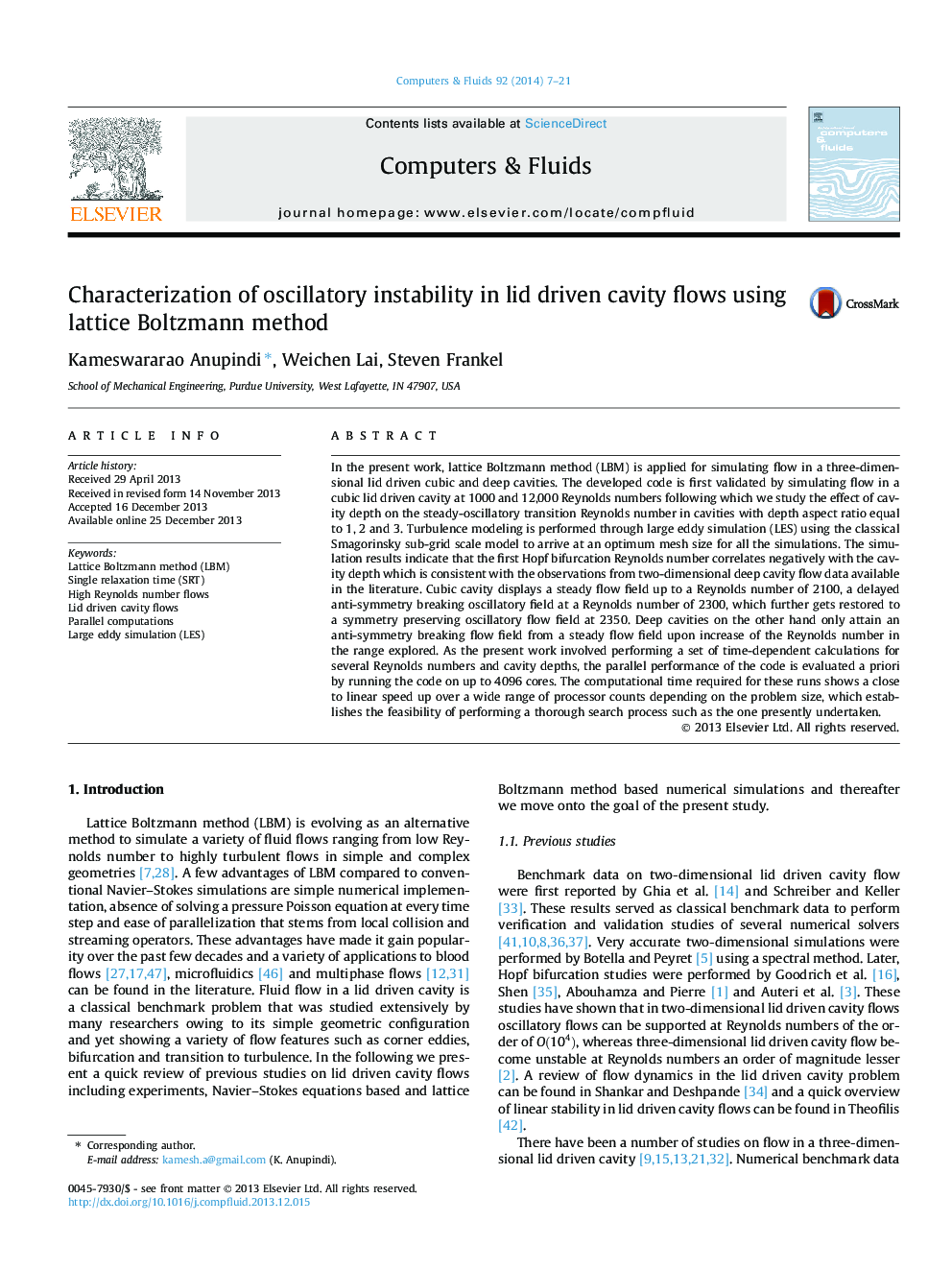| Article ID | Journal | Published Year | Pages | File Type |
|---|---|---|---|---|
| 761862 | Computers & Fluids | 2014 | 15 Pages |
•LBM solver is validated for Re = 1000 and 12,000 in a lid driven cavity.•Steady-oscillatory transition Re negatively correlates with cavity depth in 3D.•Single and multiple frequencies are seen in cubic and deep cavities respectively.•Linear parallel speed up is obtained using the developed LBM solver.
In the present work, lattice Boltzmann method (LBM) is applied for simulating flow in a three-dimensional lid driven cubic and deep cavities. The developed code is first validated by simulating flow in a cubic lid driven cavity at 1000 and 12,000 Reynolds numbers following which we study the effect of cavity depth on the steady-oscillatory transition Reynolds number in cavities with depth aspect ratio equal to 1, 2 and 3. Turbulence modeling is performed through large eddy simulation (LES) using the classical Smagorinsky sub-grid scale model to arrive at an optimum mesh size for all the simulations. The simulation results indicate that the first Hopf bifurcation Reynolds number correlates negatively with the cavity depth which is consistent with the observations from two-dimensional deep cavity flow data available in the literature. Cubic cavity displays a steady flow field up to a Reynolds number of 2100, a delayed anti-symmetry breaking oscillatory field at a Reynolds number of 2300, which further gets restored to a symmetry preserving oscillatory flow field at 2350. Deep cavities on the other hand only attain an anti-symmetry breaking flow field from a steady flow field upon increase of the Reynolds number in the range explored. As the present work involved performing a set of time-dependent calculations for several Reynolds numbers and cavity depths, the parallel performance of the code is evaluated a priori by running the code on up to 4096 cores. The computational time required for these runs shows a close to linear speed up over a wide range of processor counts depending on the problem size, which establishes the feasibility of performing a thorough search process such as the one presently undertaken.
